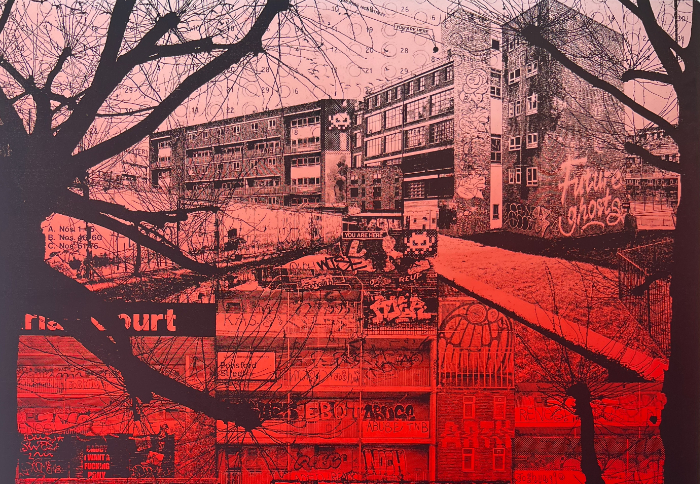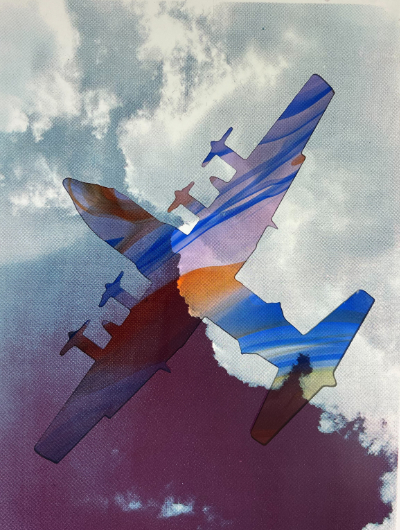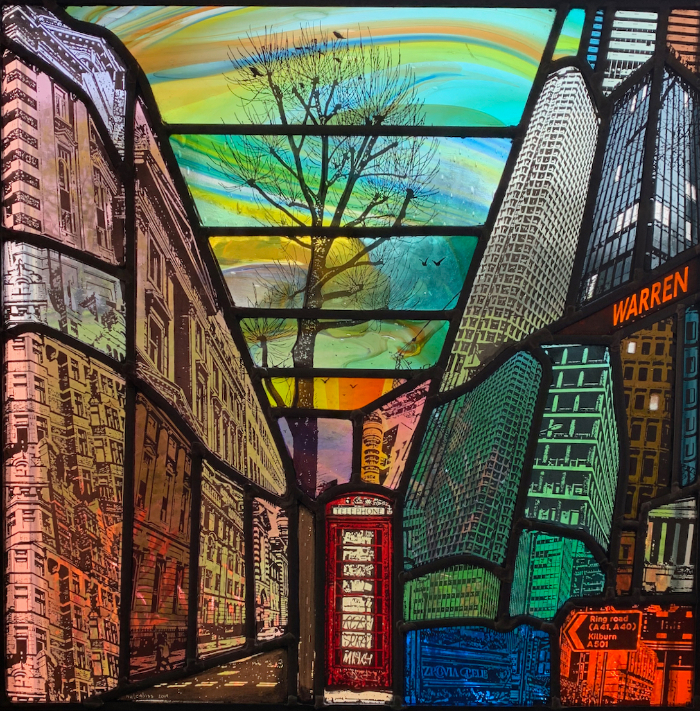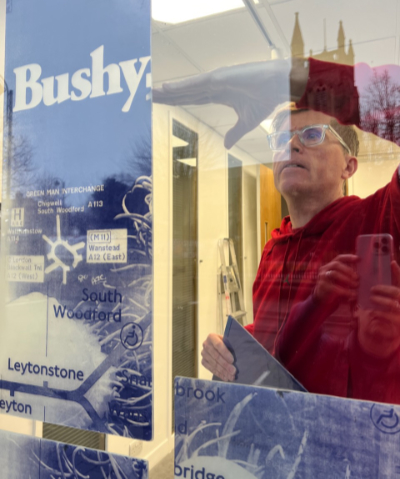
Screen test
Glass artist James Cockerill loves experimenting with traditional methods and the latest printmaking techniques to create his distinctive artworks. Linda Banks finds out more.
You are known for your glass printing techniques. What led you to start working with glass?
My fascination with glass began during my Fine Arts studies. I was captivated by its ability to capture and transform light, creating dynamic interactions with my images. The challenge of combining traditional glass techniques with modern printmaking innovations intrigued me and led to the founding of HALTglass.

What other glass techniques have you used, and which do you prefer?
Over the years, I’ve experimented with hand painting, sandblasting, leaded glass, mouth-blown glass bonding and silver staining. Each technique has its unique qualities, but I particularly enjoy screen printing. It allows me to integrate photographic and graphic elements into glass, pushing the boundaries and going places creatively which would not be possible with hand painting.

What is your creative approach? Do you draw your ideas out or dive straight in with the materials?
My creative process often begins with a subject that interests me and holds meaning. I then turn to the various techniques I’ve learnt to explore that subject. I particularly enjoy experimenting with no fixed goal and seeing what unfolds on the light table. I am led by the results of my experimentation.

You recently created an installation in a former shop that holds fond memories for you. Please tell us more about that project.
The installation, ‘Corner Shop’, was a tribute to a local shop that had been a fixture in the community for decades. I photographed the shop and its owner over many years. After the shop closed, I screen-printed these images using blue transparent enamel, which allowed the internal light to diffuse through the prints, creating a ghostly, memory-laden effect. It was a way to commemorate the shop and explore how we share memories, even though every person’s recollections are different. Here is a video about it.

What message(s) do you want to convey through your art?
My work often explores themes of memory, time and human interaction with our environments. I aim to provoke reflection on our personal and shared histories, highlighting the transient nature of life and the lasting impact of our actions on our world.
What is your favourite tool or piece of equipment and why?
It has to be my silk screens. I can endlessly recycle them to produce complex, varied, and unlimited results on glass.

Do you have a favourite piece you have made? Why is it your favourite?
‘At This Moment’ is a very personal piece, which marks a time when I consciously departed from making work for, and to please, others. I created something purely for myself.

Where do you show and sell your work?
I exhibit my work in galleries across the UK and internationally. I currently have a solo exhibition at the Stained Glass Museum in Ely, Cambridge, which runs until the end of September 2024, and my work is for sale in their shop. I maintain a web store, linked to my social media accounts, which drives sales. I also enjoy helping other artists realise their artworks using my techniques in my one-to-one studio sessions.
You share your knowledge through teaching classes. What advice would you give to someone starting out on a career in glass?
My advice would be to embrace experimentation and not fear failure. Glass is a challenging medium, but it rewards persistence and innovation. Learn the traditional techniques thoroughly, but don’t be afraid to incorporate new technologies and your personal artistic vision. Form a group of fellow glass artists and seek out mentors.

Do you have a career highlight?
Winning the Stevens Architectural Glass Artist of the Year Award in 2019 was a significant milestone. It not only boosted my confidence, but also opened new opportunities for large-scale projects and collaborations.

Where is your glass practice heading next?
I am interested in exploring more large-scale, site-specific installations that engage with their environments and communities. I’m also keen to experiment further with integrating digital technologies into traditional glass techniques. Currently, I’m loving sandblasting flash glass using photo resist and experimenting with many different types of silver stain.
And finally…
Everyone who makes art is an artist, period. I’ve found that making work about what excites me is the best way forward, as that passion will show itself within the work. I try to do my best and let go of the results because being influenced by what other people think is often not useful. I’m grateful for the opportunity to share my work and my journey, and I look forward to continuing to push the boundaries of what’s possible with glass and print by experimenting and seeking out what excites me.

Find out more about James Cockerill and his work via the website.
Main feature image: Detail of James Cockerill’s ‘Future Ghosts’, made using plated Lamberts flashed glass. All images by the artist.